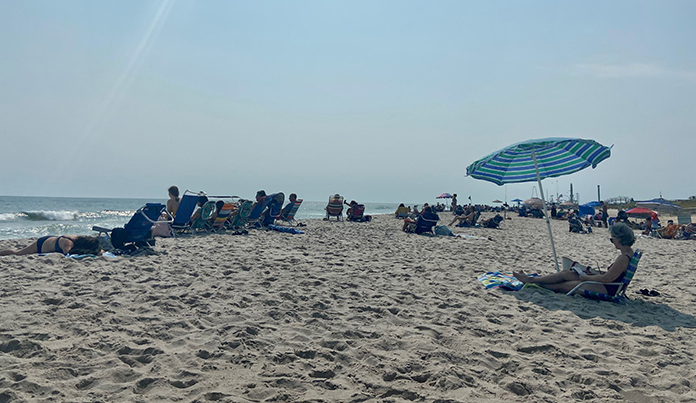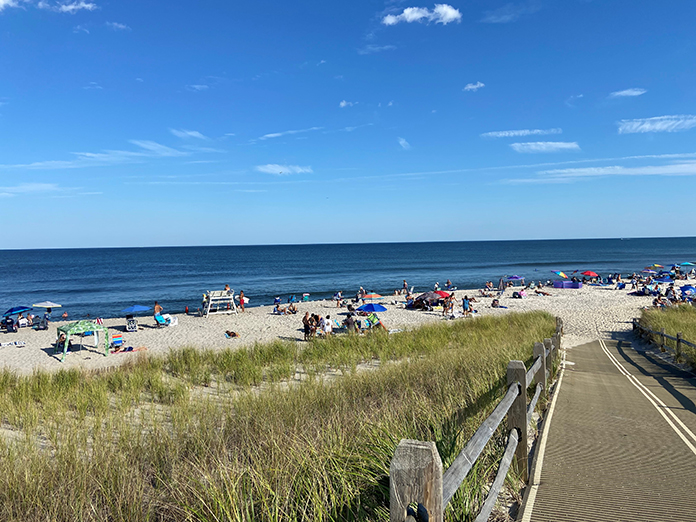
JERSEY SHORE – This is the time of year where many locals go out to enjoy the beaches without the crowds of tourists.
Although “locals’ summer” is popular around the shore, there are still some out-of-town visitors savoring the beach as the sunny weather continues throughout the Fall months.
On September 18, multiple swimmers off 8th Avenue and Ocean Avenue in Ortley Beach were victims of dangerous water conditions.
A 27-year-old woman from Brookfield, Connecticut, was among a group a four people who were caught in a rip current, police said. The woman was seen going under water multiple times and did not appear to be moving. After enduring a dangerous rip current and being pulled from the surf, the woman died from her injuries.
On that same day at Brick Beach I, a 54-year-old man drowned after a rescue attempt. Two surfers tried to rescue the man after seeing him in distress.
With the lifeguards not on duty during the off season, the beaches are “swim at your own risk.” Despite this, many beachgoers still swim in the waters without any lifeguards.
So, is this the main reason in the recent increase of water rescues? Brian Cerbone, the Beachfront Supervisor at Ortley Beach, said many incidents occur in the off season because the weather is still nice and visitors go in the water without knowing its conditions.
“I actually feel we have more incidents in the spring before we come on full time. Either side of the season, you are going to have more incidents because most people are unaware of ocean conditions when they show up to the beach,” Cerbone said. “Usually, the out of season incidents are due to the surf conditions. It is usually a combination of rips and larger surf. Also, people think that the weather (sunny skies) means everything is okay. The ocean is its own entity and has its own characteristics. This past weekend we had a tropical storm off the coast which led to larger surf. Storms can be hundreds of miles away and affect us with their swell. I think this past weekend was an unlucky combination of nice weather and rough surf and people wanting to get in that last ditch beach time.”
Cerbone explained that rough surf occurs throughout the entire year. Although the beach is guarded for three to four months, there’s a total of five to six months of swimming weather.

“When you have more water coming in (large surf), that same water has to escape back to the ocean. This leads to bigger/stronger rips. Most people are unaware to swim parallel to the shoreline to escape and try to swim straight back to shore. They become tired or have a medical episode and don’t make it back,” Cerbone said.
In Monmouth County, Sea Girt Lifeguard Chief Timothy Harmon said many people visit off season because the beaches are free.
“Usually because the weather is nice people enjoy the free beaches and it’s obvious that some people even make September trips to the beach their first trips of the year. Many people enjoy the beaches being free, no lifeguards, no rules etc. However, that also means no safety measures in place and increased risk of injury or a tragic event like a drowning happening because no one is watching over you and managing the safety of the beach or swimming area,” Harmon said. “Usually, the end of August and most of September brings with it what we call ‘September Surf,’ tropical storms, different wind patterns and increased surf conditions which then change the ocean bottom which then create rip currents. This all happens in this shoulder season which many refer to as local summer.”
So when lifeguards aren’t on duty, how can beachgoers be safer and more cautious? Harmon says it’s simple: stay out of the water.

“It’s very simple. Enjoy the sand. Stay out of the water and/or don’t overestimate your ability. If you are going to go swimming, maintain a safe depth to where you are close to the beach. Understand that there are rip currents that form along the jetties and outflow pipes – stay away from them. Look for the sandy colored water – it looks totally different than the rest of the rolling surf. Swim with a buddy and make sure you have somebody on land watching you,” Harmon said.
“We just had an afterhours rescue where two mothers took their three children to the beach with 3-to-5-foot surf and sweeping conditions pushing them into the rocks. They went swimming 35 feet to the south of the jetty and within seconds were pushed into the rocks were the child got caught up. They don’t understand the strength and the unforgiving nature of the ocean. It is certainly not like your backyard pool. Just meeting people that come to the beach, (they) don’t understand the ocean like lifeguards do, which is why when we’re on duty,” Harmon said. “As a lay person or beach goer you just plop your stuff on the beach and jump in the water and you don’t think about the things that the trained observer is thinking about or monitoring for safety.”






